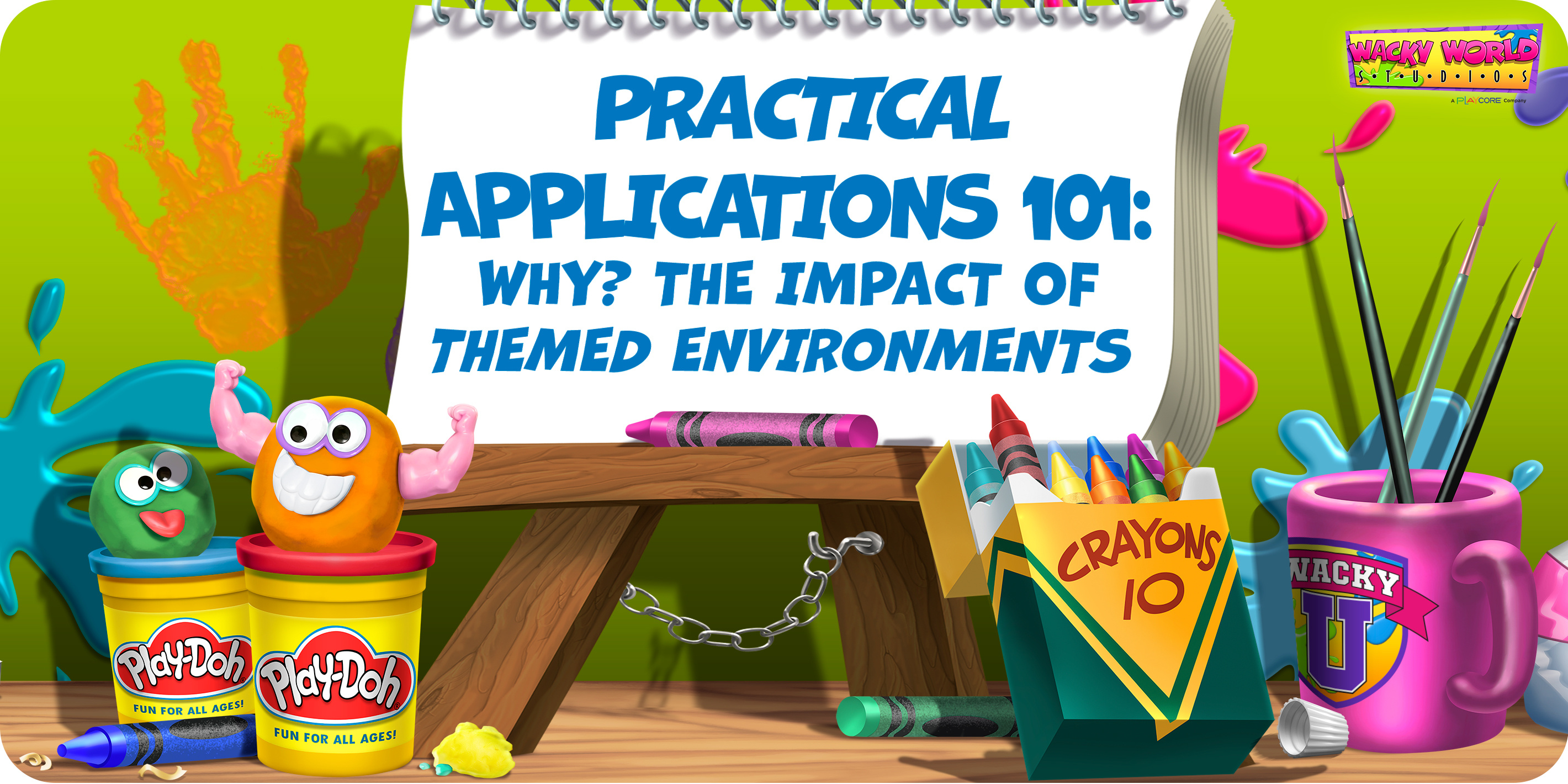Churches & Religious Organizations, Healthcare, Early Education, Parks & Rec, Practical Applications
Why? The Impact of Themed Environments
February 17, 2025
Themed environments have become an increasingly integral part of a wide array of industries, from entertainment and healthcare to education and retail. But why do these immersive spaces have such a powerful impact on people? What makes them so effective in creating memorable experiences, fostering engagement, and evoking emotional responses?
At the core, themed environments resonate with universal human needs: the desire for connection, engagement, and escape. This course explores the deeper reasons behind the growing prevalence of themed environments, examining their psychological, social, and economic impacts.
Course Syllabus
The Power of Narrative: Connecting People to PlaceEngagement Through Multisensory Stimulation
Escapism: A Break from Everyday Life
Fostering Social Interaction and Community Building
Memory Creation and Brand Loyalty
Economic Value: Creating Destinations
Transforming Spaces: From Ordinary to Extraordinary
Final Exam
The Power of Narrative: Connecting People to Place
One of the most powerful aspects of themed environments is their ability to tell a story. Humans are wired to respond to narrative. It gives context, meaning, and emotional resonance to otherwise mundane experiences. Whether you're walking through a rainforest-themed resort lobby or exploring a children’s play center designed as a pirate ship, the narrative embedded in these spaces immerses people in a shared experience that transcends their physical surroundings.
Why is this effective? Themed environments offer more than just visual appeal—they connect people to the space by weaving them into a story. This storytelling aspect helps visitors feel like active participants rather than passive observers. The result is not just memorable but emotionally engaging, turning an ordinary visit into a transformative experience. Retailers, for example, are increasingly adopting this principle by designing stores as experiences, engaging customers with an overarching story rather than just product displays.
Engagement Through Multisensory Stimulation
Themed environments appeal to multiple senses, not just sight. By engaging sound, smell, and even touch, these environments heighten engagement and focus. For example, a jungle-themed restaurant doesn't just rely on visual cues like murals of trees; it might play the sounds of rustling leaves, or incorporate earthy smells to create an immersive jungle experience.
Why is this significant? Multisensory environments capture attention more effectively and sustain it for longer periods. Studies show that environments which engage multiple senses improve mood, attention, and memory retention. This is particularly valuable in educational and retail spaces where engagement and recall are crucial. It also explains why themed environments in entertainment, like theme parks, are so effective—they’re not just visually stunning; they engage visitors holistically, offering a full-bodied experience.
Escapism: A Break from Everyday Life
In today’s hyperconnected, fast-paced world, immersive theming provides people with an opportunity for escapism. Themed environments transport individuals into entirely different worlds, allowing them to disconnect from daily stressors. Whether it’s a spa with a tropical theme or a dental waiting room designed as a sleek spaceship interior, the ability to create a sense of escapism is a significant reason for the success of themed environments across industries.
Why does this matter? Themed environments provide more than just entertainment—they offer a psychological reprieve. This is particularly important in high-stress contexts like healthcare or corporate environments. A hospital designed to resemble a peaceful forest can help ease anxiety for both patients and staff, creating a more positive experience overall. Similarly, companies are now investing in immersive office designs to promote creativity, reduce stress, and improve employee well-being.
Fostering Social Interaction and Community Building
Themed environments are often designed to be shared experiences, making them ideal for fostering social interaction. A themed café, a nature-inspired park, or a fantasy-based indoor play center doesn't just attract individual visitors; it draws families, friends, and communities together. The narrative and sensory immersion provide a shared platform for interaction, whether it’s a group of friends bonding over a themed escape room or families participating in a creative playground adventure.
Why is this impactful? Humans are inherently social creatures, and themed environments offer spaces that encourage interaction in ways traditional spaces do not. In an educational or work context, for instance, a creatively themed space can inspire group activities and collaborative thinking. Themed environments become catalysts for community building, creating connections between people who might otherwise be strangers.
Memory Creation and Brand Loyalty
One of the strongest impacts of immersive environments is their ability to create lasting memories. When people visit a well-designed themed space, they tend to remember it—not just because it looks impressive, but because it made them feel something unique. The emotional responses elicited by themed environments lead to stronger memories, which is why themed restaurants, hotels, and even retail stores often enjoy higher customer retention and loyalty.
Why does this generate long-term benefits? A memorable experience is a repeatable experience. In business, this translates into higher customer retention and brand loyalty. In education or therapeutic environments, it can enhance learning and healing by embedding positive emotional associations. For instance, children who receive treatment in a themed hospital room are more likely to associate the experience with comfort, reducing anxiety for future visits.
Economic Value: Creating Destinations
Finally, immersive themed environments can transform a standard business or public space into a destination. For cities looking to boost tourism, companies aiming to enhance customer experiences, or schools seeking to increase engagement, themed environments provide a clear differentiator. What might have been an ordinary café, retail store, or park becomes a destination that people actively seek out.
Why is this a driving factor? Themed environments offer a competitive advantage in saturated markets. Businesses that provide unique, immersive experiences stand out, often commanding higher prices and attracting more foot traffic. Entire industries are seeing this effect, from the explosion of themed hotels to retail spaces that combine shopping with a full-fledged thematic experience. By turning spaces into destinations, businesses and public spaces not only attract more visitors but also encourage repeat business.
Transforming Spaces: From Ordinary to Extraordinary
The impact of themed environments goes far beyond their immediate visual appeal. By leveraging the power of narrative, multisensory engagement, escapism, social interaction, memory creation, and economic value, these spaces have a profound influence on how we engage with the world around us. Themed environments offer both businesses and communities new ways to connect, inspire, and engage, turning everyday places into extraordinary destinations. As these spaces continue to evolve, their potential to enrich various industries will only expand, making them an invaluable asset across multiple sectors.
Ready to test your knowledge?
Stay in the know with Wacky World Studios! We're here to help you with all stages of your theming journey. Make sure you sign up for our monthly newsletter and subscribe to this blog for even more handy theming resources and information. You can also get lots of great inspiration when you follow us on social. Our Pinterest and Instagram pages are overflowing with photos and ideas.
Subscribe here for Wacky U updates!
And for you DIYers, be sure to check out our online shop at WackyWorldDIY.com.


